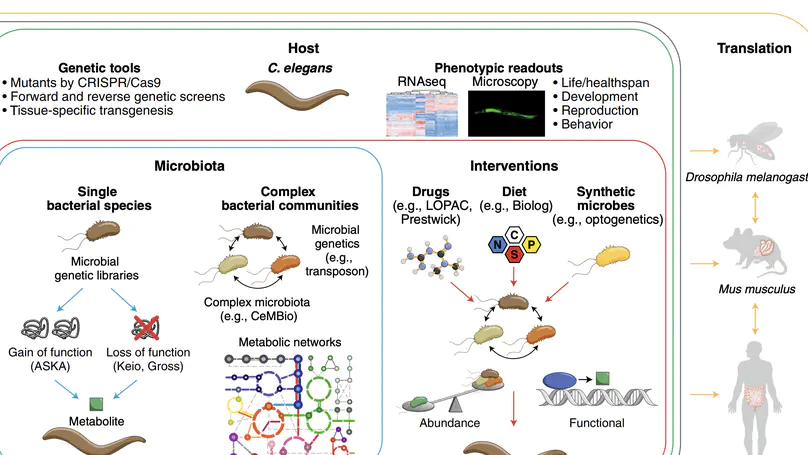Biography
I am a postdoc researcher form the Cabreiro lab. The lab, placed between the UK (London) and Germany (Cologne) uses the nematode C. elegans to explore host-microbe interactions at multiple biological levels, and within relevant contexts such as aging, infection or ecology.
I did my PhD in the sunny and warm Valencia, at the I2SysBIo (Insitute of Systems and Integrative Biology). There, under the supervision of Andrés Moya (Prof in Genetics) and Carlos Peña (CSIC physicist) I learned a great deal about microbiome, ecology, evolution and a bit of mathematical modelling of microbial populations. With those tools, I was able to develop models to test microbial dynamics and interrogate the data in search of a connection between health and stability. We were able to demonstrate that stable microbiomes are present in healthy humans, but when that stability is broken by any perturbation, the host might be facing some health issues. While doing this, I was able to learn a great deal of bioinformatics and coding along the way, specially to work with R and a bit of Python.
Armed with that theoretical and practical skillset, I wanted to gain the experimental skills to delve deeper into the mechanisms that made possible the intricate communication between host and microbes. Specifically, I wanted to understand how complex communities exist and are created, how they are stable or not under perturbations, and how these effects could be ultimately transmitted to the host. Going to Filipe’s lab was a great move as I could improve all these gaps in my skills in addition to be working with an interesting host as it is C. elegans.
However, the pandemic came to our lives when I was only 1.5 years in the lab, so I moved back to work from home and my computers. Since then, I have been exploring different ways to study microbes and hosts, getting a wider knowledge in microbial population genetics with their pangenomes.
Download my resumé.
- Microbe-host interactions
- Microbial community ecology
- Computational biology
PhD in Biomedicine and Biotechnology, 2019
Universidad de Valencia
MSc in molecular, cell and evolutionary biology, 2012
Universidad de Valencia
BSc in Biology, 2010
Universidad de Valencia
Recent Publications
Experience
Recent Posts
Projects
Recent & Upcoming Talks
Featured Publications

Microbes are an integral part of life on this planet. Microbes and their hosts influence each other in an endless dance that shapes how the meta-organism interacts with its environment. Although great advances have been made in microbiome research over the past 20 years, the mechanisms by which both hosts and their microbes interact with each other and the environment are still not well understood. The nematode Caenorhabditis elegans has been widely used as a model organism to study a remarkable number of human-like processes. Recent evidence shows that the worm is a powerful tool to investigate in fine detail the complexity that exists in microbe–host interactions. By combining the large array of genetic tools available for both organisms together with deep phenotyping approaches, it has been possible to uncover key effectors in the complex relationship between microbes and their hosts. In this perspective, we survey the literature for insightful discoveries in the microbiome field using the worm as a model. We discuss the latest conceptual and technological advances in the field and highlight the strengths that make C. elegans a valuable biosensor tool for the study of microbe–host interactions.
Contact
- dmartimarti@gmail.com
- Du Cane Rd, London, London W12 0NN
- DM Me
- Zoom Me
